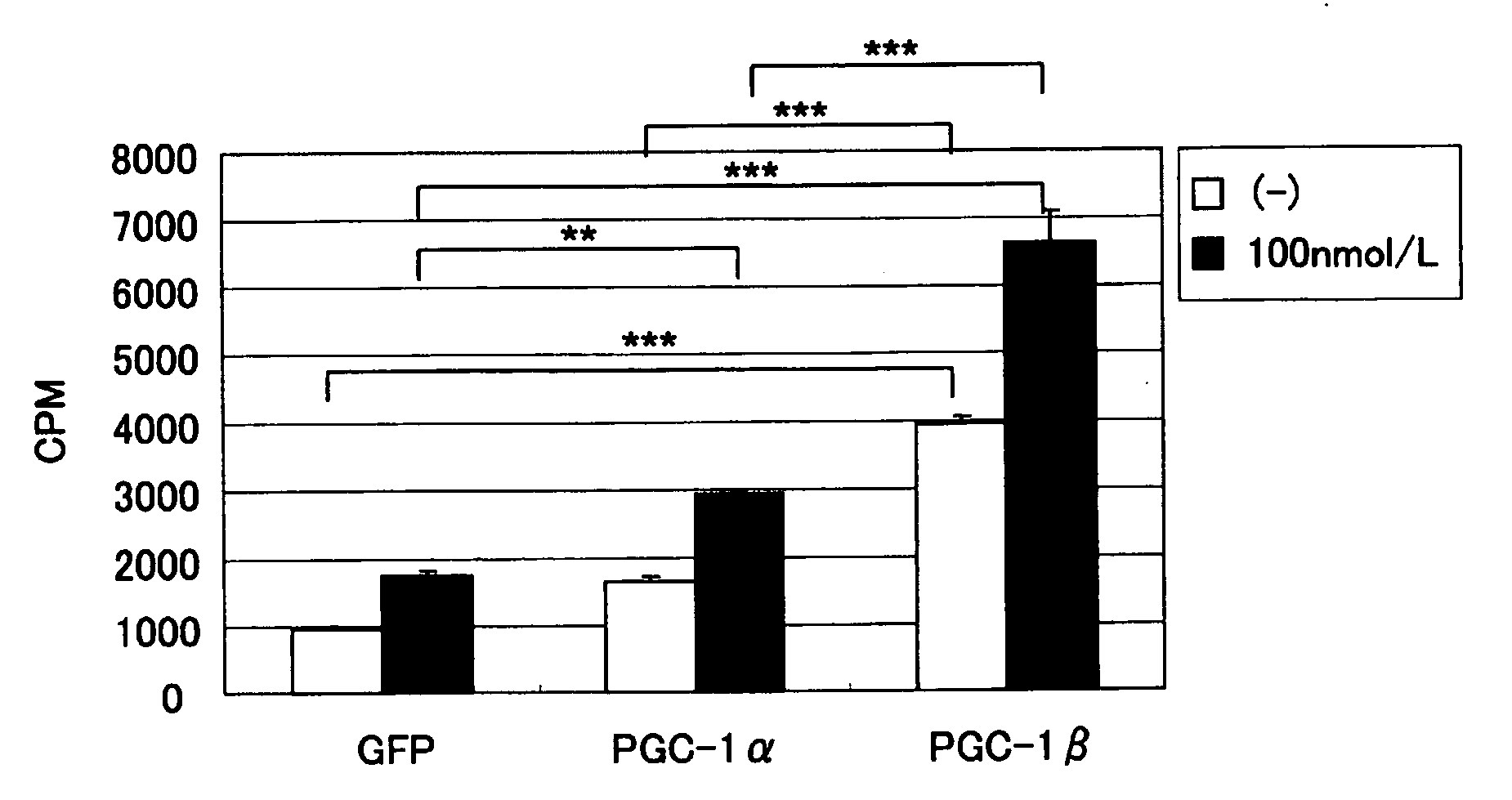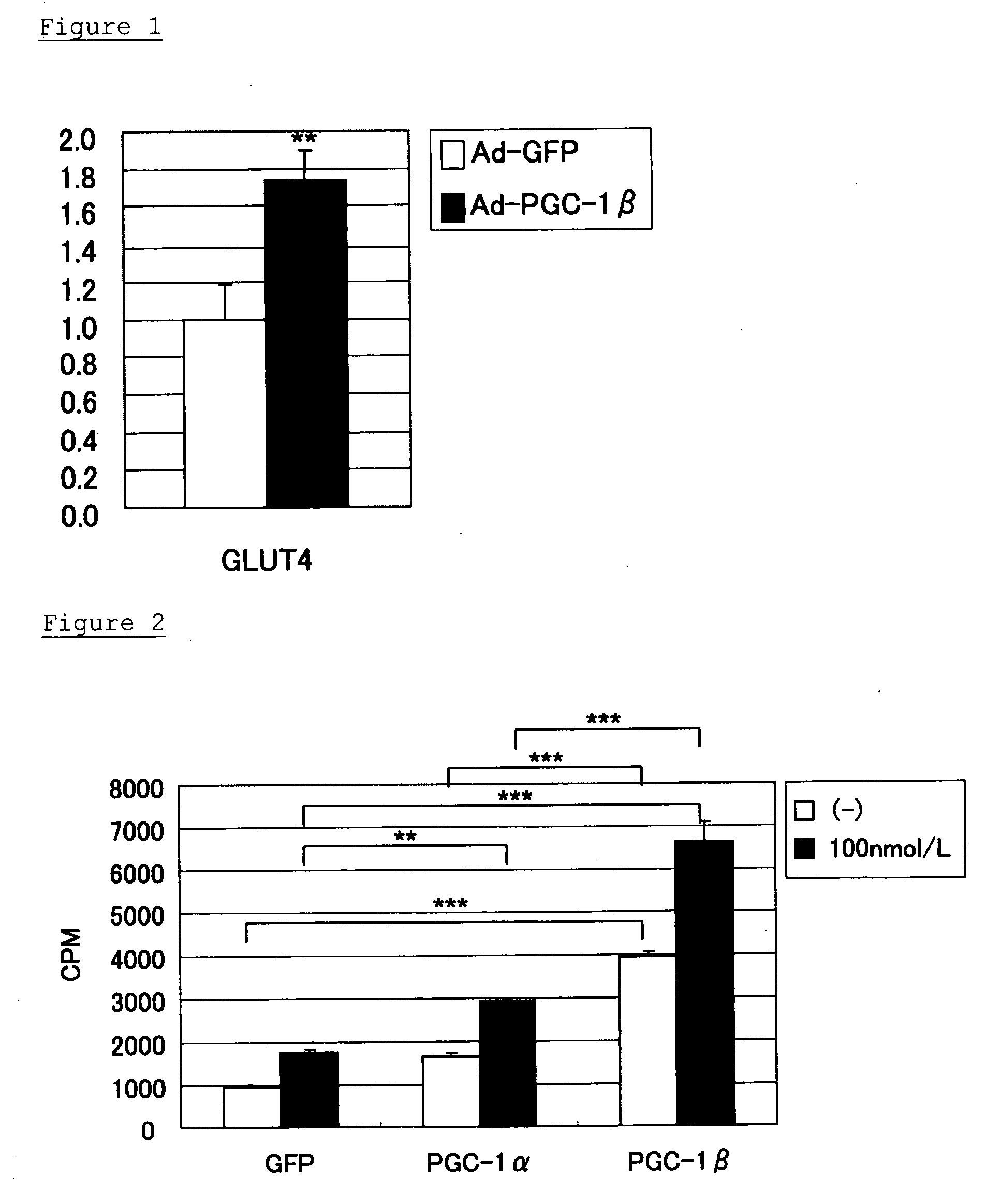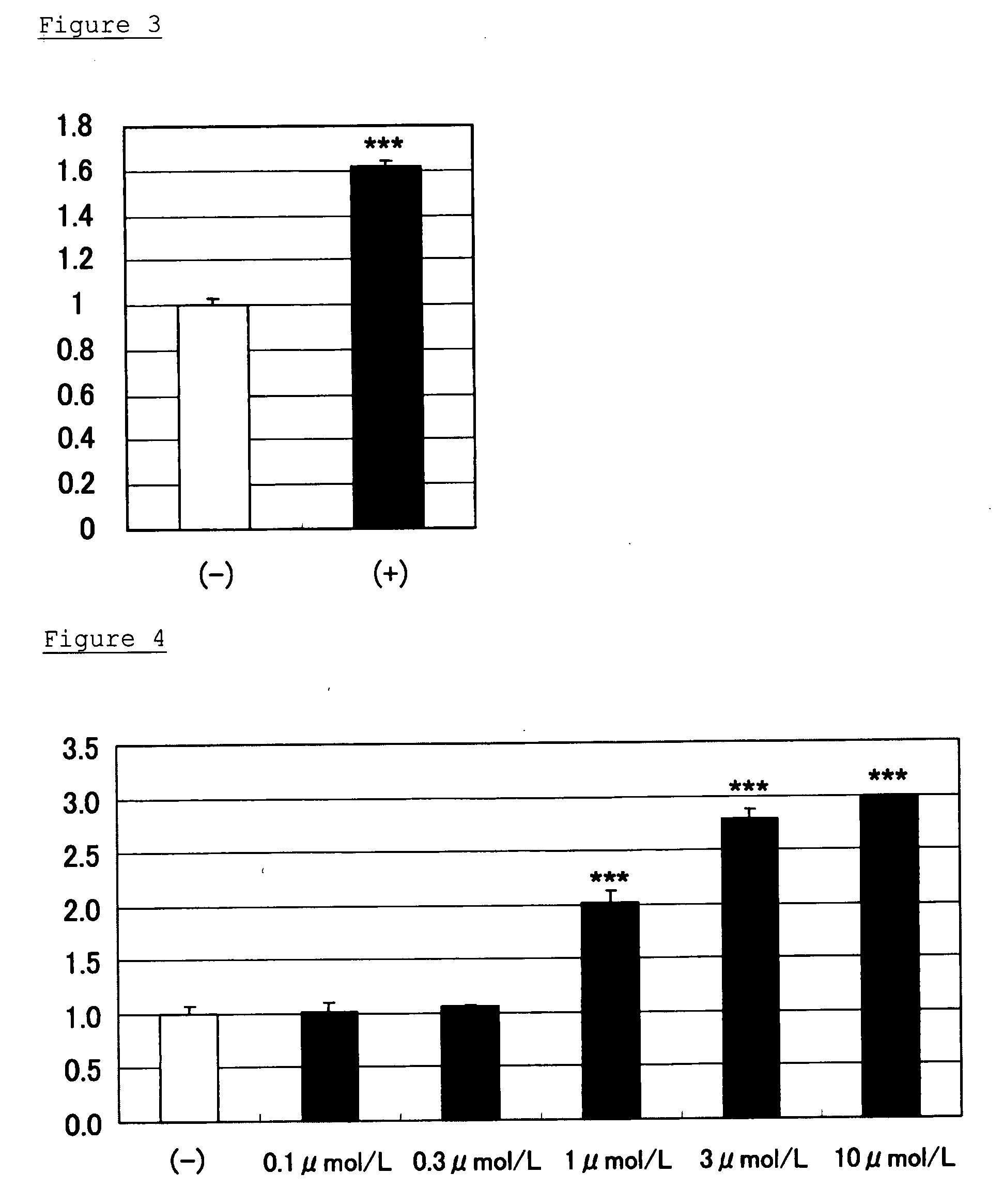Novel Activating Agent of Glucose Uptake and a Screening Method Therefor
a technology of activating agent and glucose, which is applied in the direction of peptides, drug compositions, metabolic disorders, etc., can solve the problems of not having a pgc-1 promoter activity of dna, unsatisfactory tzd derivatives as agents, and not being established, so as to promote glucose uptake and promote glucose uptak
- Summary
- Abstract
- Description
- Claims
- Application Information
AI Technical Summary
Benefits of technology
Problems solved by technology
Method used
Image
Examples
example 1
Cell Cultivation
[0070] A tissue into which the largest amount of glucose can be incorporated in a living body is muscle. In this example and the following examples, a rat myoblast L6 was used to detect an activity of glucose uptake in vitro. L6 cells (ATCC, CRL-1458) were maintained in a Dulbecco's modified Eagle's medium (GIBCO BRL, USA, 11995-065) supplemented with 10% fetal bovine serum (JRH BIOSCIENCES, Cat. No. 12303-500M), and cultured in a humid atmosphere containing 5% CO2 at 37° C. When the L6 cells were confluent, the medium was changed to a Dulbecco's modified Eagle's medium supplemented with 2% horse serum (GIBCO, Cat. No. 16050), and further cultured for 5 days to perform an induction of differentiation.
example 2
[0071] An oligonucleotide (SEQ ID NO: 2) consisting of 25 nucleotides of the N-terminal sense sequence of a human PGC-1β gene (PERC, GenBank Accession No. NM—133263) and an oligonucleotide (SEQ ID NO: 3) consisting of 29 nucleotides of the C-terminal antisense sequence thereof were synthesized, and used as PCR primers. A cDNA library from human skeletal muscle (cDNA Library Human Skeletal Muscle, TaKaRa, Code No. 9514) was used as a template, and a PCR was carried out using an enzyme for PCR, Pfu DNA polymerase (Stratagene, Cat No. 600135), in accordance with a manual attached thereto, to obtain a DNA fragment of approximately 3 kb containing the human PGC-1β gene.
example 3
Construction of Recombinant Adenovirus for Overexpressing Human PGC-1β
[0072] The DNA fragment of approximately 3 kb containing the human PGC-1β gene, which was obtained in Example 2, was inserted into the KpnI-NotI site of a shuttle vector (pAdTrack-CMV) for adenovirus, to obtain a shuttle vector (pAdTrack-hPGC-1β) for adenovirus overexpressing human PGC-1β. The obtained pAdTrack-hPGC-1β was linearized by a digestion with PmeI, and Escherichia coli BJ5183 was cotransformed with the linearized vector and an adenovirus backbone vector pAdEasy-1, to obtain a vector (pAdEasy-hPGC-1β) for adenovirus overexpressing human PGC-1β by homologous recombination. The obtained pAdEasy-hPGC-1 was linearized by a digestion with PacI, and 293 cells were transfected with the linearized vector using a reagent for transfection (FuGENE™6, Roche, Cat. No. 1815091) in accordance with a manual attached thereto. A recombinant adenovirus (Ad-hPGC-1β) for expressing human PGC-1β was obtained from the 293 cell...
PUM
| Property | Measurement | Unit |
|---|---|---|
| weight | aaaaa | aaaaa |
| weight | aaaaa | aaaaa |
| time | aaaaa | aaaaa |
Abstract
Description
Claims
Application Information
 Login to View More
Login to View More - R&D
- Intellectual Property
- Life Sciences
- Materials
- Tech Scout
- Unparalleled Data Quality
- Higher Quality Content
- 60% Fewer Hallucinations
Browse by: Latest US Patents, China's latest patents, Technical Efficacy Thesaurus, Application Domain, Technology Topic, Popular Technical Reports.
© 2025 PatSnap. All rights reserved.Legal|Privacy policy|Modern Slavery Act Transparency Statement|Sitemap|About US| Contact US: help@patsnap.com



